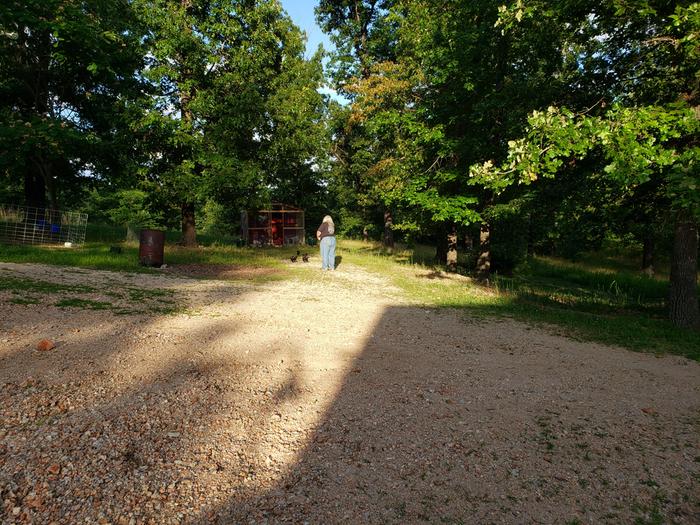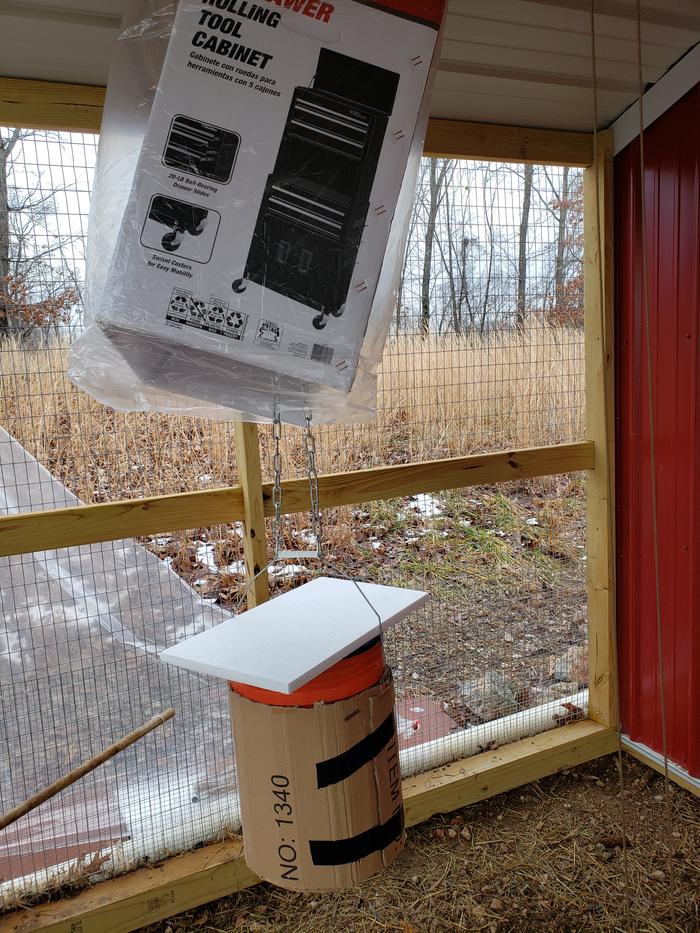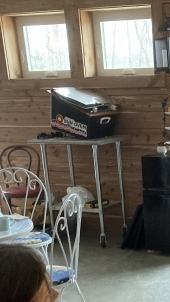




The only thing...more expensive than education is ignorance.~Ben Franklin
 1
1




SKIP books, get 'em while they're hot!!! Skills to Inherit Property
 1
1




Am I to assume you mean sub-0 Fahrenheit?Thankfully, by the time it was past working, it was also pretty much past the longer-lasting sub-0 temps.
Yeah - that about sums them up where styrofoam is concerned! I had the same issue trying to use it to keep the top of a bucket warm. I'd use wood the next time. We usually don't have to cope much below 0 Celsius which is much easier, but I'm still known to carry out jugs of hot water late evening to help. It sounds like you need a better solution than that.goofwads
Visit Redhawk's soil series: https://permies.com/wiki/redhawk-soil
How permies.com works: https://permies.com/wiki/34193/permies-works-links-threads
 2
2




The only thing...more expensive than education is ignorance.~Ben Franklin
 3
3




"You must be the change you want to see in the world." "First they ignore you, then they laugh at you, then they fight you, then you win." --Mahatma Gandhi
"Preach the Gospel always, and if necessary, use words." --Francis of Assisi.
"Family farms work when the whole family works the farm." -- Adam Klaus
 3
3




Come join me at www.peacockorchard.com
 6
6




Carla Burke wrote:Ozarks, so yes, 0F, not C. I sometimes forget about celcius, because.. well. I never use it. I should know better than to pose questions like this, when I'm bordering on sleep, lol. I always forget stuff - like the fact that this run/coop is more than 150ft (down the length of a rough gravel driveway) from the nearest power & water sources. So, in hoping to find a solar or battery operated heater - but, so far...nada
A piece of land is worth as much as the person farming it.
-Le Livre du Colon, 1902
 6
6





"Study books and observe nature; if they do not agree, throw away the books." ~ William A. Albrecht
 10
10




SKIP books, get 'em while they're hot!!! Skills to Inherit Property
 5
5




I'm not sure what defines "fermented" as opposed to simply "soaking" whole grains for 24 -48 hours before feeding the birds, but my friend in the Yukon does the latter. Wet vs dry food does decrease the need for water.I do feed fermented so that really helps lower the liquid water I give them in the winter.
Visit Redhawk's soil series: https://permies.com/wiki/redhawk-soil
How permies.com works: https://permies.com/wiki/34193/permies-works-links-threads
 6
6




 3
3




The only thing...more expensive than education is ignorance.~Ben Franklin
 2
2




At my age, Happy Hour is a nap.
 3
3




Carla Burke wrote:Hmmm... I wonder... maybe water-heater wrap, reinforced with metal tape?
A piece of land is worth as much as the person farming it.
-Le Livre du Colon, 1902
 3
3




Timothy Markus wrote:
Carla Burke wrote:Hmmm... I wonder... maybe water-heater wrap, reinforced with metal tape?
They burn out when the water gets too low. I made a beautiful one with heat wrap, insulation and a 1/4" hardware cloth exterior with two nipples. Might work if you recirc through the bucket, but it was an expensive lesson.
The only thing...more expensive than education is ignorance.~Ben Franklin
 2
2




Your determination has convinced me! I believe you!I'm GOING to figure it all out, probably incorporating several of your ideas!
OK, if there's an emergency, can you have a prepared, fenced area in with the goats? Like pre-prepared panels that latch together, so the chickens and goats can share heat?But, filling pans multiple times per week is not even an option *for me*, for our own health, and likelihood of emergency interstate travel, for our parents.
Visit Redhawk's soil series: https://permies.com/wiki/redhawk-soil
How permies.com works: https://permies.com/wiki/34193/permies-works-links-threads
 4
4




. . . bathes in wood chips . . .
 1
1




Jay Angler wrote:
At Princess Auto, I've seen insulated tarps - don't know how they would work on parts of the run.
My sister used that silver-backed bubble wrap in her basement. I wouldn't want to trust it within reach of chickens, but if you made a "water alcove" and put it in between two layers of wood or consider insulating the whole roof of the coop with it, would that help?
Hubby always says that insulation just keeps the heat where it is, it doesn't actually *generate* any heat. If you blocked the wind on some sides, but put clear plastic or old windows where the sun shines, would there be a way to hold the sun's heat in? We get a fair bit of sun in our living room in the winter, but none in late June early July due to the angle of the sun, so you'd need to figure out what the sun's angle is at the time of year you get the coldest weather...
OK, if there's an emergency, can you have a prepared, fenced area in with the goats? Like pre-prepared panels that latch together, so the chickens and goats can share heat?
I'm trying to throw crazy ideas out there, because even if my crazy won't work, it might inspire other people's crazy! I totally get what you're dealing with. We almost never get snow. Then we'll get a year with two feet of it, the chickens are in the back corner of the back field almost a quarter mile from the house, and Hubby would get called away. Not just "not fun" but dangerous. Normally the snow melts the same day or within two days, but with weather weirding, it's often hanging around for 1-2 weeks and things I can physically cope with for two days, becomes overwhelming for two weeks.
The only thing...more expensive than education is ignorance.~Ben Franklin
 5
5




SKIP books, get 'em while they're hot!!! Skills to Inherit Property




Anne Pratt wrote:Any solar warmth you can add to the coop would be a plus, as would insulation. But don’t shut off the ventilation. They could be in danger from a buildup of ammonia inside the coop. Not that you were planning to make it airtight, just posting a general warning.
If you go the way of nipples, only use horizontal nipples. The vertical ones can freeze up.
I have a small (2 gallon?) heated waterer. It’s thermostatically controlled. It was a lifesaver from having to go break the ice repeatedly. They don’t love drinking from those nipples, but they do it. Mine also get mash made with warm water in the morning, and this is a big favorite. They also eat snow!
The only thing...more expensive than education is ignorance.~Ben Franklin
 1
1




Mike Haasl wrote:Another idea, if you ever get power down there, is to bury a 100' long piece of 4" corrugated drain tile in a loop that goes from the coop to the coop. Put a little fan in it and it should take coop air (5 degrees warmer than outside?) and run it underground to be heated up to 40-50F before it returns to the coop. Aim it at the water so it keeps that thawed and the heat in general will keep the coop warmer for the birdies.
I made this idea up so maybe you'd need more pipe than that. But it feels about right to me...
The only thing...more expensive than education is ignorance.~Ben Franklin
 2
2






The only thing...more expensive than education is ignorance.~Ben Franklin
 3
3








Visit Redhawk's soil series: https://permies.com/wiki/redhawk-soil
How permies.com works: https://permies.com/wiki/34193/permies-works-links-threads




William Bronson wrote:I have found that tarps layered in between two blankets form a great winter barrier.
The outer blankets protect tarps from wind and sun, even better once they are wet and even better when frozen.
The inner blankets I spray or soak with borox water to keep the bugs from moving in.
The only thing...more expensive than education is ignorance.~Ben Franklin
 1
1




Jay Angler wrote:Would it be possible to make some sort of 3-legged stool with a hole that would support the bucket but leave the nipples accessible? That would get rid of the chains, which would make insulating the whole thing easier, but maybe with an insulated hinged lid that could just be tipped up to refill the bucket?
Downside would be that if you didn't make some sort of conical lid to fit on top, the birds might decide to perch there. Upside, is that at least they'd be helping keep it warm?
There'd be details to work out, but I could see an insulated wooden box attached to the "stool" and if the stool was wide enough, that would sort of make the "cubby" you were talking about that would help still the air and trap it a little?
The only thing...more expensive than education is ignorance.~Ben Franklin
 4
4




SKIP books, get 'em while they're hot!!! Skills to Inherit Property




Mike Haasl wrote:(new personal record for the number of times I used the word "nipples" in a post)
The only thing...more expensive than education is ignorance.~Ben Franklin




The only thing...more expensive than education is ignorance.~Ben Franklin

 4
4





- Tim's Homestead Journal - Purchase a copy of Building a Better World in Your Backyard - Purchase 6 Decks of Permaculture Cards -
- Purchase 12x Decks of Permaculture Cards - Purchase a copy of the SKIP Book - Purchase 12x copies of Building a Better World in your Backyard
 4
4




 4
4




 4
4




 4
4




 4
4




We can take care of our small piece of this world. Leave no footprints.
 5
5




 3
3




 Did you get any pictures of your spa-attendees?
Did you get any pictures of your spa-attendees?
|
Curse your sudden but inevitable betrayal! And this tiny ad too!
Heat your home with the twigs that naturally fall of the trees in your yard
http://woodheat.net
|


